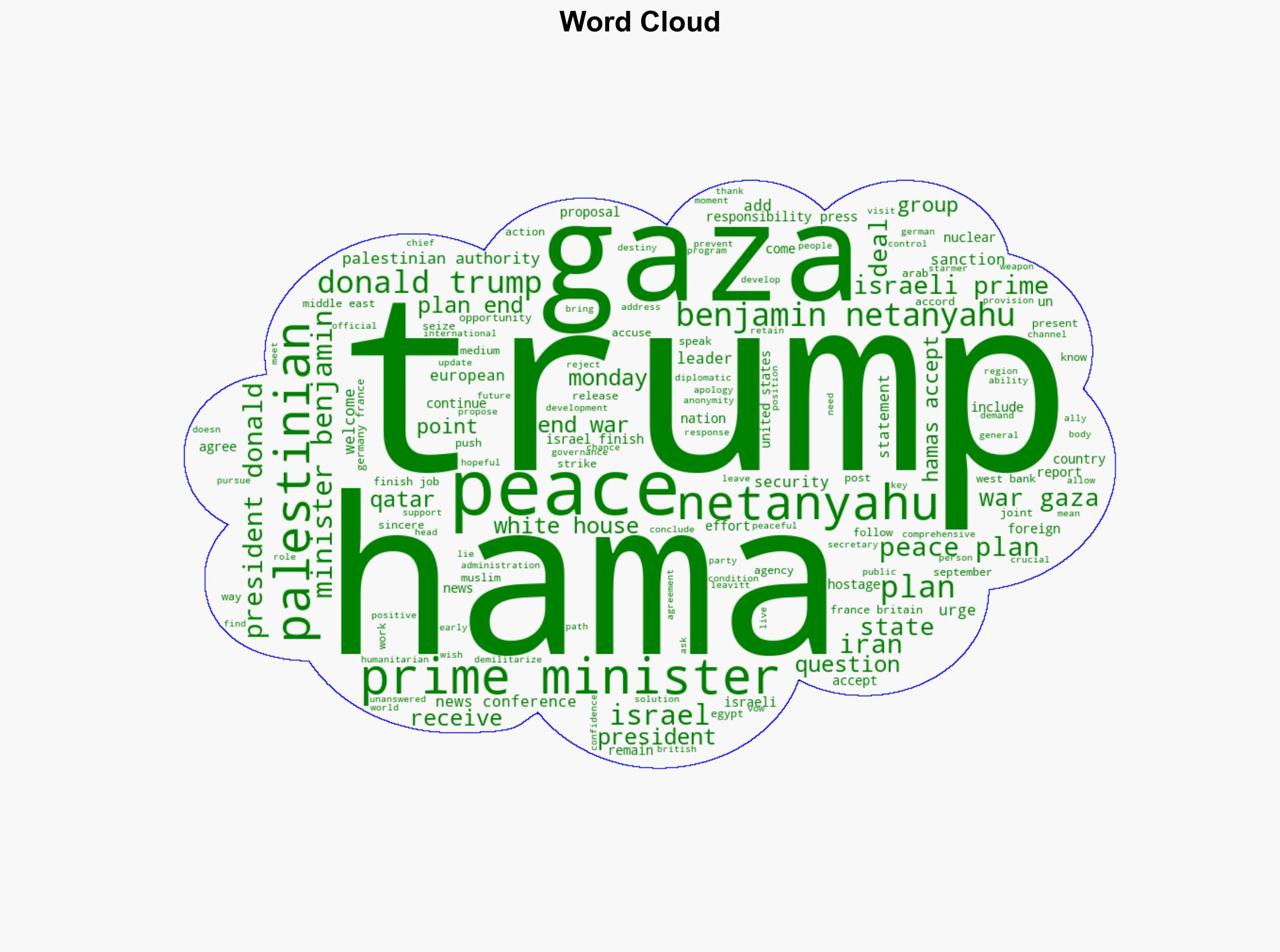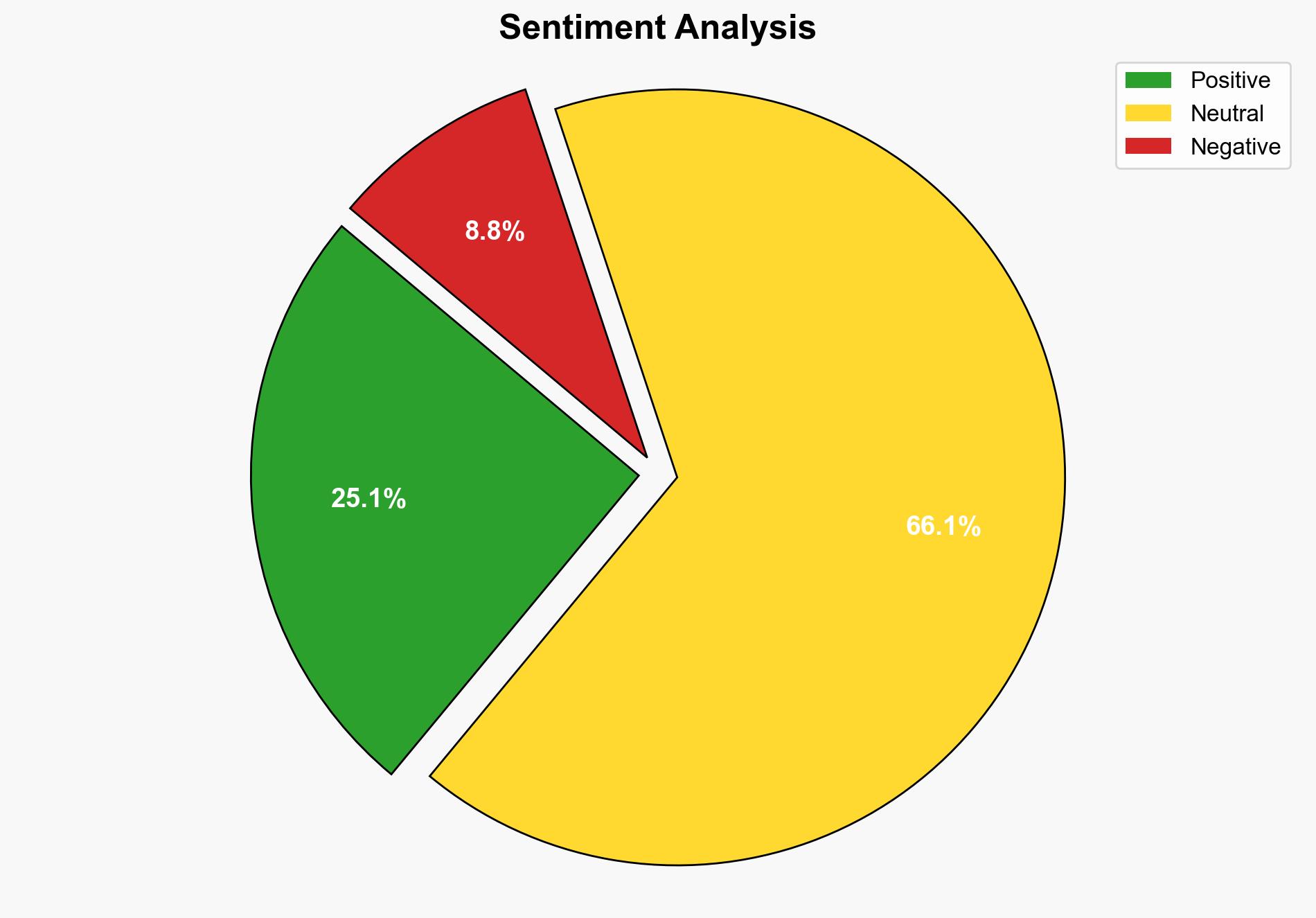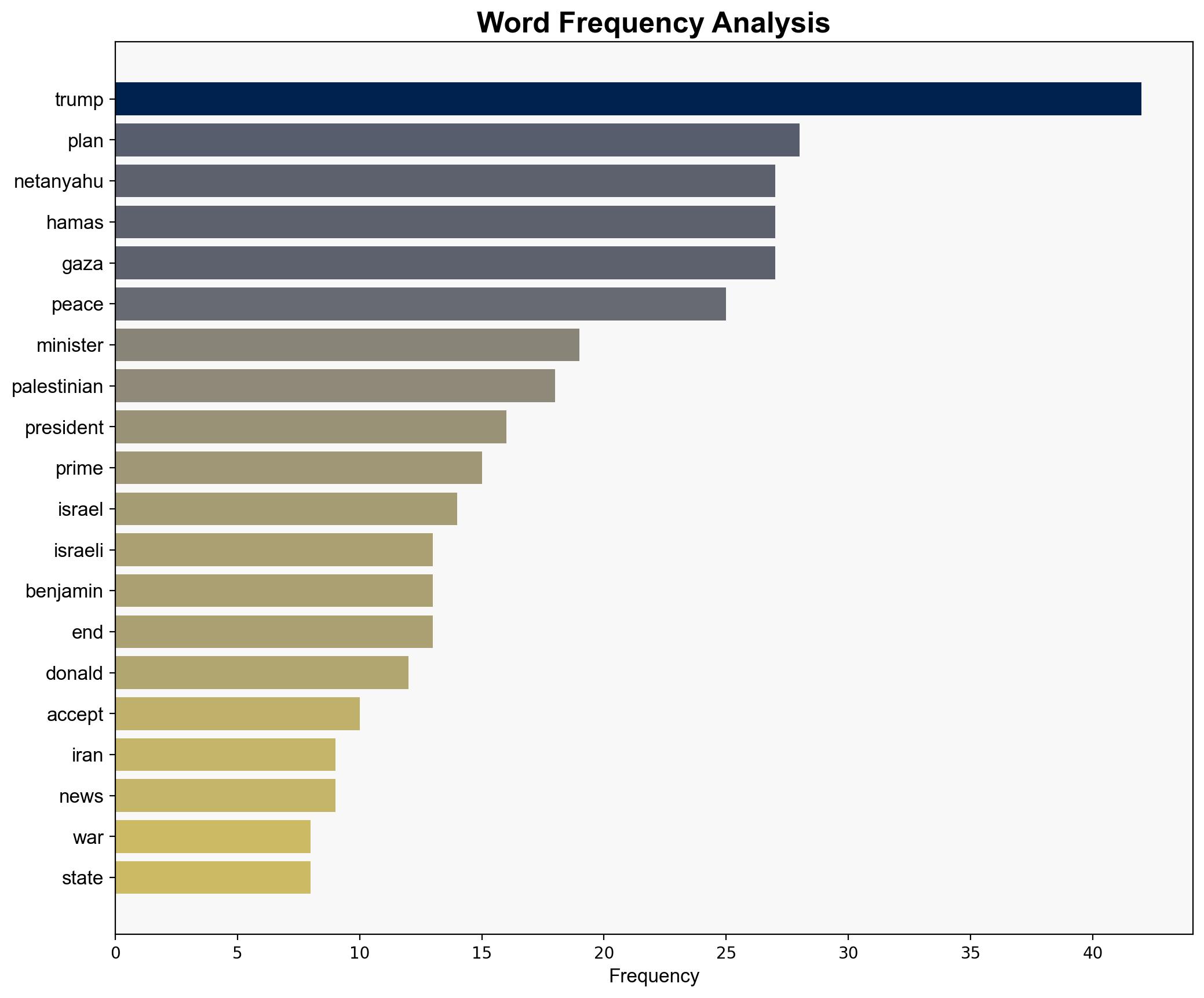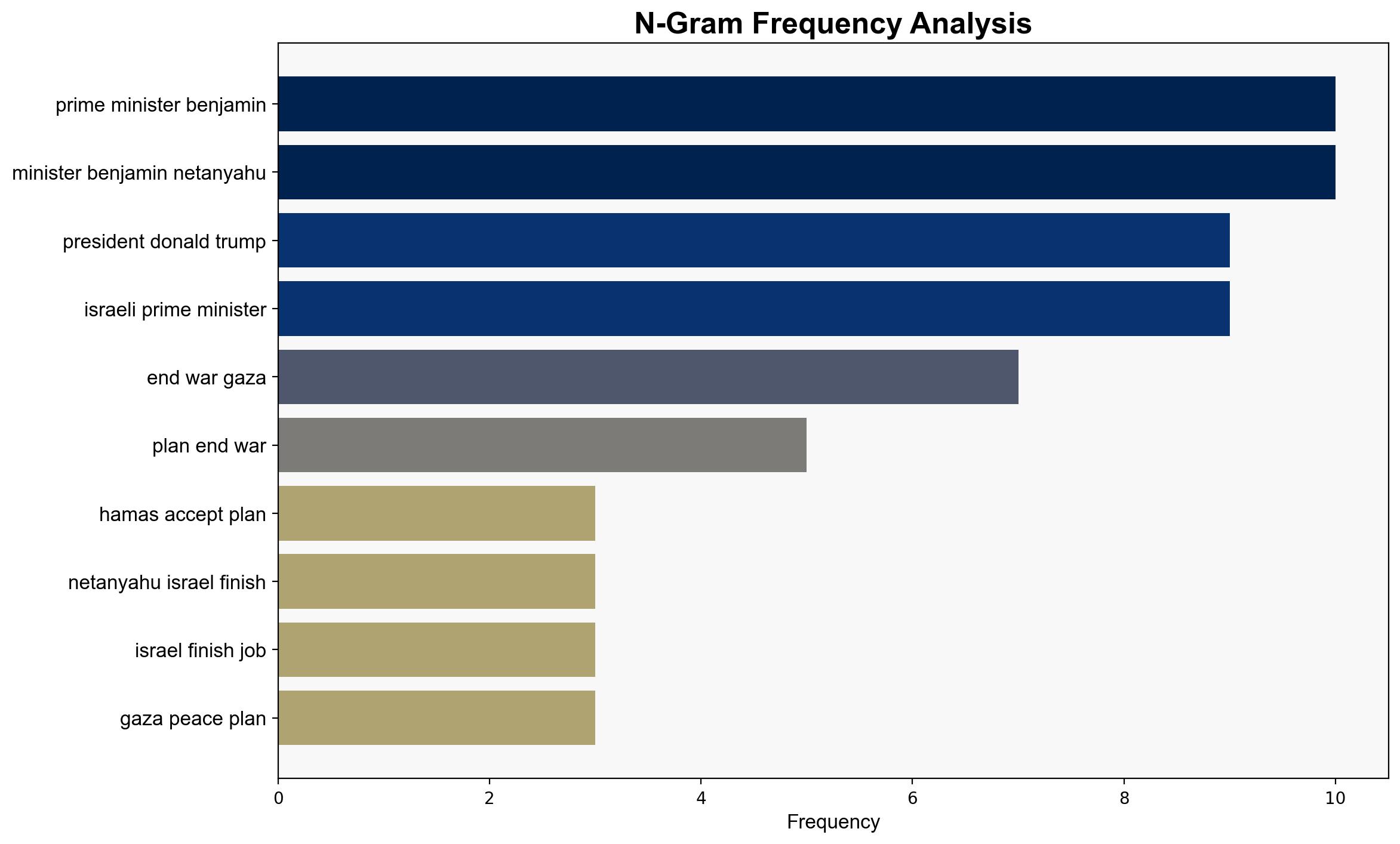Middle East Trump greets Netanyahu at White House – DW (English)
Published on: 2025-09-29
Intelligence Report: Middle East Trump greets Netanyahu at White House – DW (English)
1. BLUF (Bottom Line Up Front)
The most supported hypothesis suggests that the proposed peace plan by Donald Trump, despite international support, faces significant challenges due to Hamas’ refusal to demilitarize and ongoing Israeli military actions. Confidence in this assessment is moderate due to the complex geopolitical landscape and historical precedents. Recommended action includes diplomatic engagement with regional stakeholders to address underlying tensions and incentivize cooperation.
2. Competing Hypotheses
Hypothesis 1: The peace plan will succeed in reducing hostilities in Gaza, as international pressure and incentives will compel Hamas to accept the proposal.
Hypothesis 2: The peace plan will fail to achieve its objectives due to Hamas’ refusal to demilitarize and continued Israeli military operations, leading to further instability.
Using the Analysis of Competing Hypotheses (ACH) 2.0, Hypothesis 2 is better supported. The refusal of Hamas to demilitarize and the continuation of Israeli military actions are critical indicators that undermine the peace plan’s success.
3. Key Assumptions and Red Flags
– Assumption: International pressure will be sufficient to influence Hamas’ decision-making.
– Red Flag: Hamas’ historical resistance to external pressures and demands for demilitarization.
– Potential Bias: Overestimation of international influence on non-state actors like Hamas.
– Missing Data: Detailed terms of the peace plan and specific incentives offered to Hamas.
4. Implications and Strategic Risks
– Continued conflict in Gaza could exacerbate regional instability, affecting neighboring countries.
– Economic impacts include potential disruptions in trade and increased humanitarian aid requirements.
– Geopolitical risks involve strained relations between Israel and its neighbors, complicating broader Middle East peace efforts.
– Psychological impacts on populations in conflict zones could lead to increased radicalization and recruitment by extremist groups.
5. Recommendations and Outlook
- Engage in multilateral diplomacy to address Hamas’ concerns and offer viable alternatives to demilitarization.
- Enhance intelligence-sharing among allies to monitor developments and preempt potential escalations.
- Scenario Projections:
- Best Case: Successful implementation of the peace plan, leading to reduced hostilities and improved regional stability.
- Worst Case: Escalation of conflict, resulting in significant humanitarian crises and regional destabilization.
- Most Likely: Prolonged negotiations with intermittent ceasefires, but no lasting resolution.
6. Key Individuals and Entities
– Donald Trump
– Benjamin Netanyahu
– Hamas leadership
– Emmanuel Macron
– Keir Starmer
– Georgia Meloni
– Antonio Costa
7. Thematic Tags
national security threats, regional focus, peace negotiations, Middle East conflict





